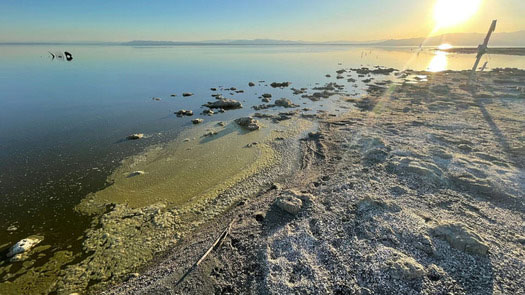por Suzanne Potter, Producer
Local groups in the Imperial Valley are working to make sure the coming boom in lithium extraction will benefit the community, as well as the investors.
The southern edge of the Salton Sea is considered one of the most economically distressed regions in California, yet it may contain enough lithium to supply batteries for 400 million electric vehicles.
Manuel Pastor, P.hD, is the director of the Equity Research Institute at the University of Southern California Dornsife College of Letters, Arts, and Sciences.
He has co-authored a book on the subject – calling for justice and democracy in the quest for clean energy.
“If we can get it right, it’s emblematic of the clean energy transition and its possibilities of being a just transition,” said Pastor, “that delivers true benefits for communities that have too long been left behind and kept behind.”
A company called Controlled Thermal Resources plans to open a new geothermal plant in 2025 or 2026 to extract lithium from salty brine and reinject the brine into the ground.
This is considered “greener” than methods used elsewhere, such as hard rock mining or evaporation ponds.
The environmental group Comite Civico del Valle has sued to slow down the permitting process. Members are worried about potential toxic leaks, tainted water, and air pollution from truck traffic.
Two years ago, the state approved a tax on lithium production. Pastor noted that those funds could make a huge difference in a community.
“Eighty percent of that needs to come back directly to the places where lithium is extracted,” said Pastor. “Twenty percent can be used for more general purposes, including the recuperation of the Salton Sea – which has long been a desire of people who live there, but there’s never been sufficient state resources to do it.”
There are 11 geothermal plants in the area that could be converted to extract lithium. Local leaders are also hoping to attract battery manufacturers to the region.



